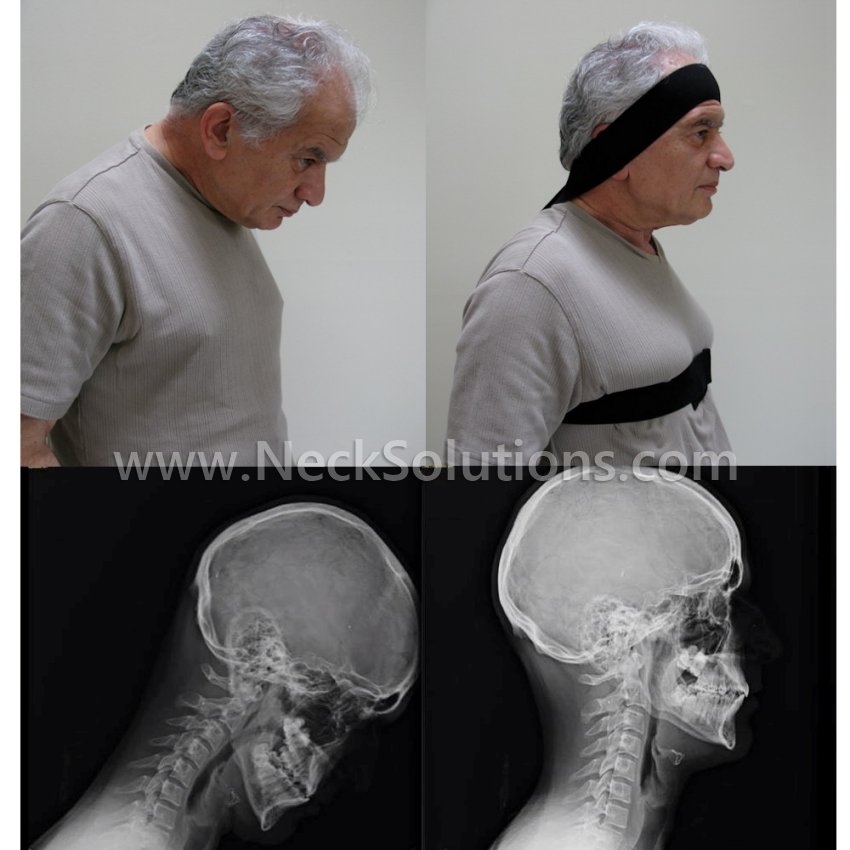- Please choose product options by visiting Savant Headrest Side Pad.
Drop Head Support
$99.99 – $139.99
Drop Head Support with no pressure under chin or on jaw. Comfortably lifts head & can be worn for hours. Please review videos & read all information below for detailed instructions. There is a learning curve, but with practice, it is an effective & popular support alternative. Professional measuring & fitting required. Consult with your physician before using.
Band: Measure Around Chest Under Bust Line. X-Small (24 – 29 in) Small (30 – 36 in) Medium/Large (37 – 42 in). X-Large (42 – 47 in) Between Sizes? Choose Smaller, Bent/Stooped Posture Of Body/Shoulders – Use Larger.
Cap: Includes band. One Size Only Fits (37 – 42 in) – Measure Same As Band.
Single Patient Use/Not Returnable. Free Shipping U.S.
Drop Head Support System For Managing Head Control Using A New Design With A Cap Or Band
Head Drop Syndrome has many different causes. It describes a lack of head control, where the head drops forward and is associated with numerous conditions. It can have a significant impact on affected individuals regarding quality of life as it can result in considerably restricted activities of daily life, including socializing and performing daily activities. The drop head support is a unique system consisting of a band or cap to hold the head up.
We recommend the employment of a health care professional, often an Occupational Therapist, for both measuring and implementation. They are not returnable as indicated in our return policy due to health concerns.
Band: Measure around chest under bust line. X-Small (24 – 29 inches) Small (30 – 36 in) Medium/Large (37 – 42 in) X-Large (42 – 47 in). Between Sizes? A smaller should work unless there is a bent or stooped over posture of the body/shoulders along with the dropped head. If so, the larger size is recommended. Cap: One size: Measure same as band, fits (37 – 42 in). Hat is adjustable to fit up to 7 3/8 hat size (23 1/8in) and is bamboo material which has “give”. Band is made of poly/nylon/lycra blend. Single Patient Use Only
Information
The Looking Forward Head Support System® is latex free and provides some possible solutions in supports for head drop that is easy to use and effective in many cases. It is an option to the Headmaster Collar for some individuals with head drop syndrome with no pressure under the jaw or chin.

Conditions Used With The Drop Head Support
Conditions that are associated with dropped head syndrome are categorized as neurological, muscular and others. While there are many, some of the neurological causes are: Amyotrophic Lateral Sclerosis (ALS) or Lou Gehrig’s Disease, Parkinson Disease, Cervical Dystonia or Torticollis, Cervical Myelopathy and Tardive Dyskinesia. Neuromuscular causes like Myasthenia gravis, and other causes such as Scleromyositis, Isolated Inflammatory Axial Myopathy, Thyroid Conditions, Mitochondrial Myopathy and neck radiation therapy causing Extensor Myopathy. Additionally, there are other conditions like weak neck muscles, muscle degeneration, and posture problems that can benefit from the support.
Benefits Of The Drop Head Support
The Looking Forward Head Support System® consist of a band system or a cap system to provide a drop head support which will allow the user to keep their head in a more upright as well as comfortable head posture. For many, the support helps with daily activities like socializing and eating. For those with head drop syndrome, there is a greater sense of independence and freedom, not being restricted and many are able to walk, getting around much better and it can even help support a better sense of balance to reduce the risk of injury from falls.
The gentleman in the pictures and video, David, suffers from Parkinson’s Disease, which affects the muscles in his neck. He has lost the ability to keep his head upright, affecting eye contact, watching TV, using a computer, ability to walk safely and eating. Using the drop head support, either the band or cap system, he can raise his head, correcting the dropped head, and enabling him to perform these activities. Developed by his loving wife Marlena, the support has made a big difference in their lives and the lives of those who use this wonderful product. We are honored to have been chosen to offer it here at Neck Solutions, and find it a great addition to our line of head support products to help with head control for those suffering head drop syndrome.
Putting On The Drop Head Support Band
The drop head support band is comfortable and easy to use, capable of being worn for long periods. Just bring the band around and down the back, then cross the end parts, bringing them around to the front of the chest, then fasten the velcro closures. The head is raised as the band is raised and secured around the forehead. This prevents the head falling forward towards the chest. The band is elastic and will fit chest sizes from 30 to 47 inches. Most users can put it on as well as remove it on their own after instructed. This allows a truly independent lifestyle for those affected with head drop syndrome.
Putting On The Drop Head Support Cap
The cap provides an attractive and alternative method to the band support. A stylish baseball cap comes with a band system that is applied in a similar manner to the band. It offers all the benefits and functionality as the band, providing an individual with head drop syndrome a support that will provide shade along with independence while walking, driving and attending your favorite sports event. The cap is one size and fits 37 to 42 inches.
Measuring For The Band Or Cap Head Support
Measuring and fitting should be done by a professional, we recommend an Occupational Therapist. This can be obtained through the primary when consulted.
Measure around the chest, under the bust line and above the waist. Measure while wearing your typical clothes. If worn underneath clothing, it is recommended to wear a light under shirt to prevent band irritation. For the band, the X-Small fits X-Small 24 – 29 in. The Small fits 30 – 36 inches. The Medium/Large fits 37 – 42 inches. The Extra Large fits 42 – 47 inches. If you are between sizes, in general, choose the small unless there is forward flexion of the torso (hunched over posture) along with drop head.
The cap is one size, fitting chest measurements of 37 – 42 inches. If you measure 2 or more inches other than available sizes, we will need to know the exact measurement and any posture issues (bent or stooped posture). Please contact us.

I Can’t Get It To Work Right!
If you read the literature enclosed with your support band, it emphasizes to pull the bands downward toward the hips to get as much stretch to the band as possible. It is not some sort of magic…just put it on and wham-o the head comes up. It’s the pulling downward on the bands that gets the head upward…just that simple. Take some time to read, watch the videos and incorporate the assistance of a therapist when all else fails. The gentleman in the video since had progressively increased head drop with more bending over at the waist, and the band continued to work. So, give this some time, don’t get frustrated. It is new and takes some time to get used to. The main thing to remember is pulling the bands downward to lift the head.
Getting The Most From Your Head Support: Read Details
Support FAQ – Q & A
Q: Is The Head Support Washable?
A: Yes, wash the bands by hand gently, using a mild soap in warm water and allow to drip dry. If washing the cap, avoid getting the brim of the hat. The cap is unlined, bamboo material. Warm water mixed with a few drops of mild dish soap (Dawn) – breaks up grease and it refreshes the cap well.
Q: Is The Head Support System Durable?
A: A slight stretching with use is possible, however, this will not affect the performance or functionality.
Q: Does The Height Where It Crosses Behind The Neck Matter?
A: Yes, a lower or higher height of crossing relates to the level of lift for the head. This will be personalized for each individual according to the level of support required. Experimenting with a crossing higher towards the neck or lower down the back will provide the best fit. The crossing, pull and stretch determines the amount of head lift.
Q: Where Should The Head Support Be Fastened?
A: Everyone has a different build, but most individuals will achieve the best comfort and head lifting if it is fastened below the bust line around the rib cage. Again, experimenting will provide the best fit.
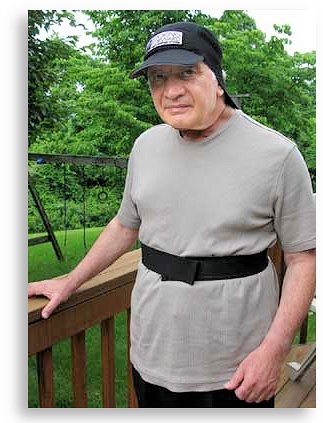
Q: How Long Can The Head Drop Syndrome Support Be Worn?
A: As you become used to it, you can wear it for as long as you are comfortable. It is recommended to have someone assist you and wear a few times per day for 1/2 to an hour each time initially. As you become more comfortable, increase to wearing 3 – 4 hours, with a half hour break and continue use. So, a gradual introduction and acclimation is recommended. With any discomfort, remove and readjust for better comfort.
Q: Will The Bands Bother My Ears?
A: If you are uncomfortable with the bands over your ears, just lift the band slightly off the ear openings. Gradually, the position with the bands over the ears will become more comfortable.
Q: Will The Support Interfere With Wearing Glasses?
A: You can position the stems of your glasses over or under the bands. It will be most comfortable using glasses with flat arms or stems when using the drop head syndrome support.
Q: Will It Interfere With A Neck Brace?
A: When wearing a neck brace, the support should be placed on after the neck brace. It is recommended to consult your health care professional before using the support with or without other devices.
Q: Can I Sleep With It On?
A: No, the drop head support should not be worn while sleeping.
The LOOKING FORWARD HEAD SUPPORT SYSTEM™ is not intended to treat, diagnose or cure medical problems. Please consult with your physician before using.
Additional information
| Choose Support Option | X-Small Band, Small Band, Medium/Large Band, X-Large Band, Cap, Custom Band, Custom Cap |
|---|
More Video
Related products
-
 Sale!
Sale!
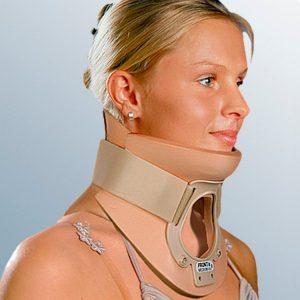
Philadelphia Collar
$59.99Original price was: $59.99.$49.99Current price is: $49.99. Select options -
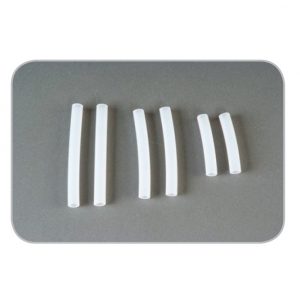

Canadian Collar Accessories
$39.99 Select options -
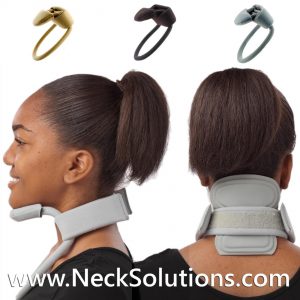 Sale!
Sale!
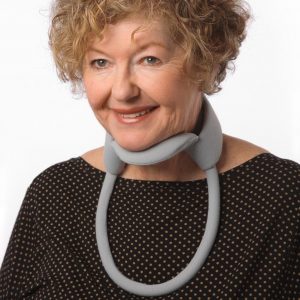
Headmaster Collar
$185.00Original price was: $185.00.$149.99Current price is: $149.99. Select options -
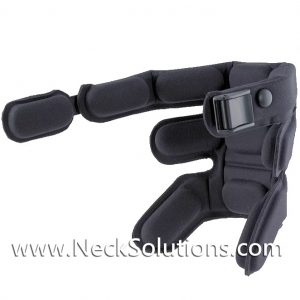 Sale!
Sale!
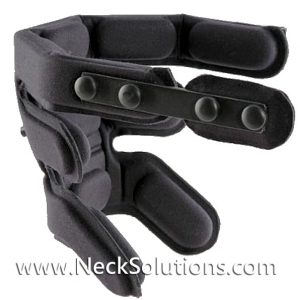
Savant Headrest Side Pad
$69.00 – $79.00 Select options
